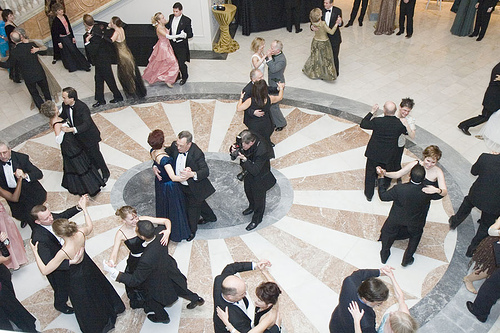Published on
The Faculty-Student Dance: Unearthing the True Value of a Creative Educational Leader

Faculty and students seem to be caught up in a dance not unlike that between a doctor and a patient. If a doctor has a caustic and uncaring bedside manner, it is unlikely that the patient will take the doctor’s advice or prescription for getting fit and well. If the doctor administers the advice and prescription with a caring demeanor, it is no guarantee that the patient will take the doctor’s advice or prescription and get fit and well, but the positive outcome is more likely.
In higher education, it is up to the faculty to maintain a caring demeanor and offer a rigorous prescription for success, but it is also the student’s responsibility to take the medicine, do the work and get better. If the faculty is belligerent and unkind, it is not likely that a student—especially a non-traditional, adult student—will follow the faculty’s lead and dance smoothly toward his or her educational goals.
There are several parallels between a reluctant patient and student and a frustrated doctor and faculty mentor. Just as it is important for the doctor and patient to create a relationship of trust and commitment in order for healthy changes to occur, it is necessary for both faculty and student to create a climate of trust and commitment in terms of scholarship and learning.
The Reluctant Student
Like a patient who is unwilling to admit that his or lifestyle has contributed to an unhealthy condition, many students are reluctant to admit that they need to make changes in their learning habits to achieve success in college. Despite individual differences in learning styles, an adult, non-traditional student can and should be taught to “learn how to learn” (Knowles, Holton, & Swanson, 2011).
The Frustrated Faculty
Like a doctor who is frustrated because he or she cannot control the patient’s behavior and, therefore, the outcomes of treatment, many faculty are frustrated and unwilling to make changes in their teaching style to accommodate what they perceive as disinterested, unable students. A creative faculty mentor can inspire the “creative energy” of his or her students by learning how to be a better leader (Knowles, Holton, & Swanson, 2011).
Creative Leaders Release Creative Energy
Knowles, Holton, and Swanson (2011) proposed that “releasing leaders” were more effective than “controlling leaders” in every industry they studied from business to education to politics. Following are their eight propositions for creative, “releasing” leaders:
- Creative leaders make a different set of assumptions (essentially positive) about human nature from the assumptions (essentially negative) made by controlling leaders.
- Creative leaders accept as a law of human nature that people feel a commitment to a decision in proportion to the extent that they feel they have participated in making it.
- Creative leaders believe in and use the power of self-fulfilling prophecy.
- Creative leaders highly value individuality.
- Creative leaders stimulate and reward creativity.
- Creative leaders are committed to a process of continuous change and are skillful in managing change.
- Creative leaders emphasize internal motivators over external motivators.
- Creative leaders encourage people to be self-directing.
If faculty mentors and doctors moved from being “controlling managers” to “releasing managers,” they would be optimizing the conditions for “the release of the enormous pent-up energy” in their students and patients (Knowles, Holton, & Swanson, 2011).
We’re All Adults But…
Truthfully, as an adult, I have the ability and access to the Internet and can find out all I need to know about any health condition I might have or any questions I might have about business administration. Why then do I go to my doctors to maintain my health, and why do I go to my faculty mentors to pursue my doctorate in business administration?
Aside from the fact that my doctor can prescribe medication and my faculty mentor gives me grades which earn credits toward my degree, what do I get from my doctor and my faculty that I cannot get for myself as an adult?
It is in the dance between the leader and the led that makes all the difference. If my doctor and faculty mentors are creative, releasing leaders and adhere to the eight propositions outlined above, I can be empowered to achieve my wellness and my educational goals. It is my energy that is released to fulfill the commitments I need to stay healthy and finish my degree, but it is the creative leadership of my doctor and faculty mentor that enable me to stay the course.
If my doctors were caustic and uncaring or my faculty mentors were belligerent and unkind, I would either find new ones or perhaps decide not to pursue their prescribed treatment or educational objectives for me until it was too late.
In other words, it is not just the information from a faculty mentor that non-traditional, adult students need. It is the creative leadership that frees them to “learn how to learn” that is needed. Whether an undergraduate or graduate, the non-traditional, adult student needs a creative leader to partner with them in the quest for a degree. The creative leader will enable their students to access the learning material, evaluate it, and apply it in a way that empowers them to complete the course, and eventually, their degree.
– – – –
Reference
Knowles. M.S., Holton, E. F., & Swanson, R. A. (2011). The adult learner: The definitive classic in adult education and human resource development. San Diego: Butterworth-Heinemann.
Author Perspective: Administrator



